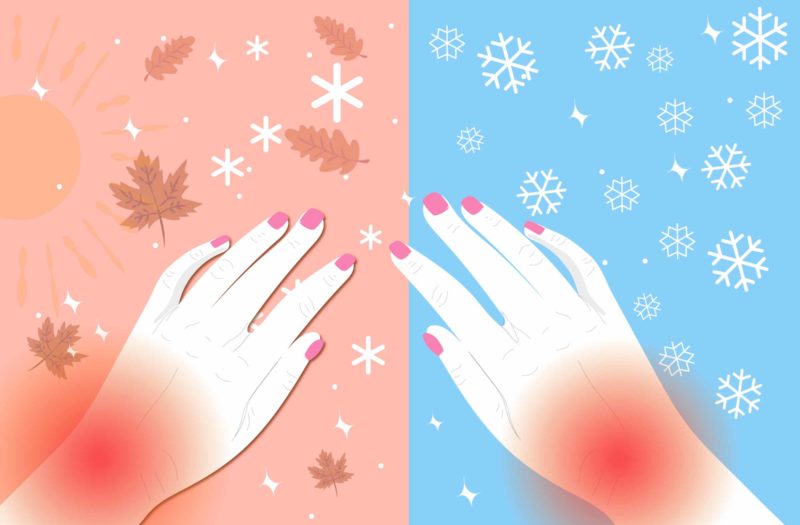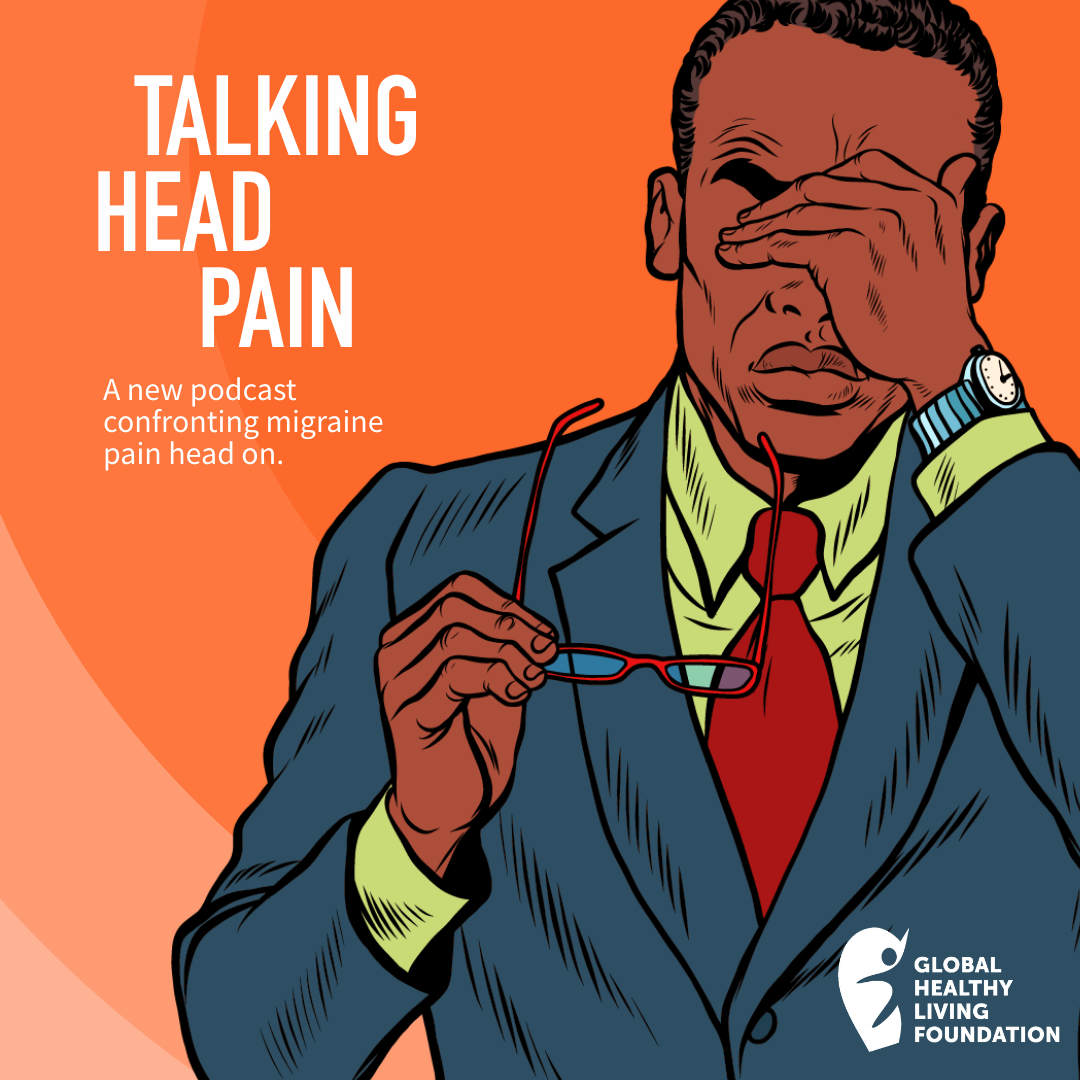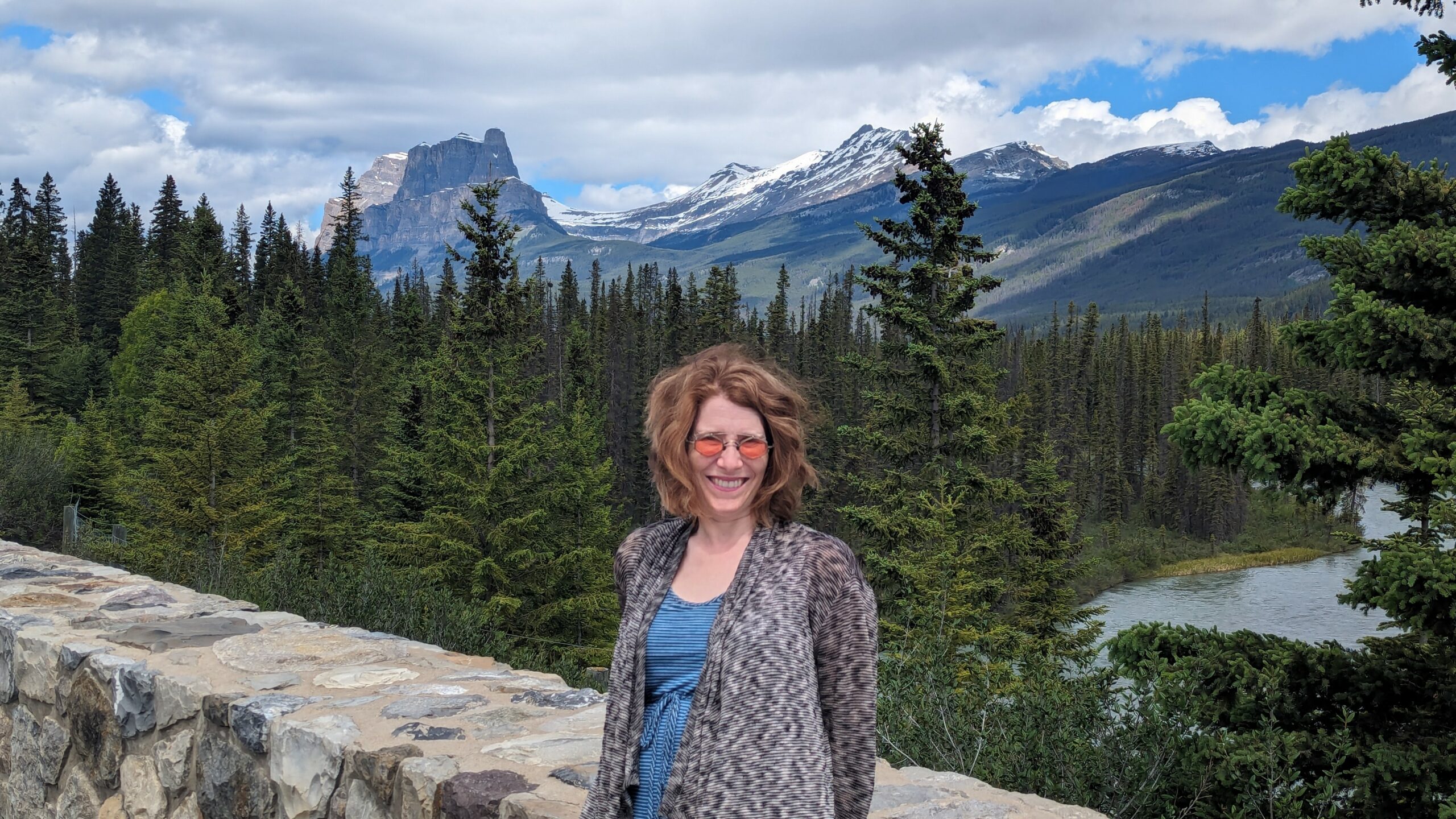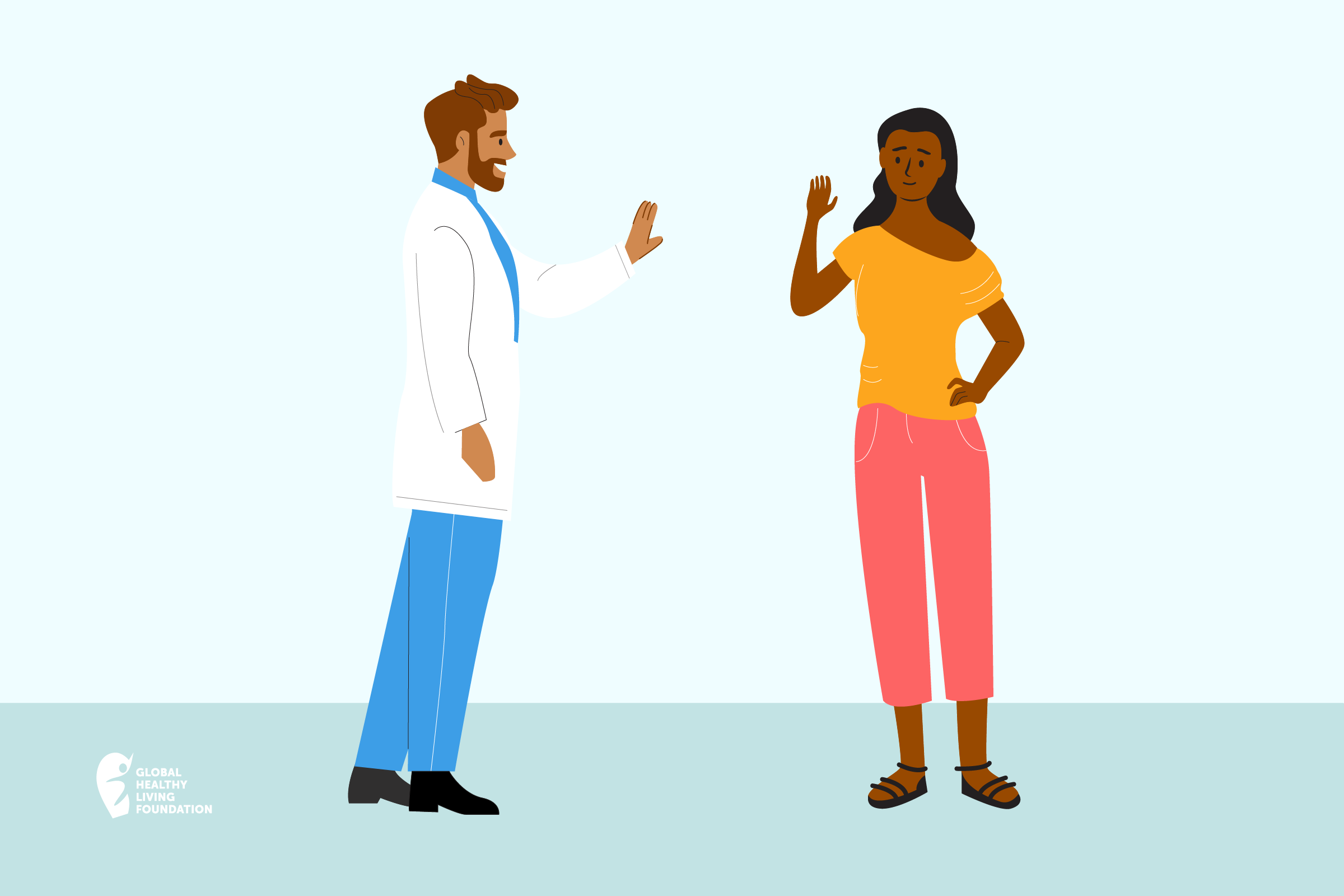

I’m never fully free of my rheumatoid arthritis (RA) pain, but things sure feel a lot better for the most part when it’s warmer. I live in the cold wet north of Vancouver, British Columbia, where I pay higher rent and living expenses because I’d prefer to avoid even more severe winter weather. At least that’s one thing stopping me from moving somewhere cheaper and colder. Sometimes I question whether I can handle all the rain though. It’s so doom and gloomy when it rains 28 days in a row sometimes. It’s not just the warmth of the sun I miss but also the dryness it provides.
When I was younger, I used to wonder why I felt so crummy from about October until March or April, depending how wet of a spring we would get. I was young and naïve; little did I know what the sunshine and that magical vitamin D did for our health and mood. I have been struggling with bouts of clinical depression since my teens, and it’s clear now that my woods would worsen during the winter months. But it wasn’t until I was diagnosed with rheumatoid arthritis at age 29 that it became glaringly obvious how much of an impact Mother Nature has on me.
Being more in tune with my health gave me a deeper understanding of how the winter affects me physically and mentally.
What Science Says About Rheumatoid Arthritis and The Winter
There are a few theories — none officially proven — floating out there as to why rheumatoid arthritis (or any arthritis) is worse off in the winter. As someone living with arthritis, all of these kinda make sense to me and probably contribute in their own way as to why I feel crummier in the colder months
They include:
- Some doctors and researchers theorize arthritis gets worse because of the drop in barometric pressure. This drop could cause the tissues like the muscles, joints, and ligaments to expand, putting more pressure on an already crowded joint and causing arthritis symptoms like pain and stiffness to worsen.
- Cold temperatures can affect blood circulation, leading to muscle spasms.
- Cold winter weather and shorter daylight hours trigger an emotional response called seasonal affective disorder, increasing feelings of depression and isolation. This, in turn, may intensify the perception of pain and discomfort from RA symptoms.
How My Arthritis Changes My Life During Winter
My joints are creakier
There’s no doubt that when the temperatures drop, my joints become quite a bit creakier. When it gets bone-chilling cold outside I can literally feel that bone chill deep inside my joints. This is heightened in the joints where I have both rheumatoid arthritis and osteoarthritis (OA).
Rheumatoid arthritis is due to my overactive immune system attacking my joints, causing inflammation and swelling. Osteoarthritis is due to the breakdown of cartilage in a joint from wear and tear, overuse, injuries, or age. It’s not uncommon for people with inflammatory arthritis like RA to also have OA in the same joint.
This can feel like a dull ache from being too sedentary or it can be a sharp pain as my muscles contract when the cold air bites.
My sleep schedule gets out of whack
When the sun starts to go down around 4 p.m., I struggle to stay awake much longer, which results in a very early rising time. I am living on the West Coast, but it seems my body wants to be on Eastern time. I am often rearing to go hours before anyone else around me, which can seem a bit lonely at times. In the winter I tend to avoid or have to cancel evening appointments or meetings because my fatigue is worse.
I am far less productive
I definitely find my productivity level drops with the temperature. There is no doubt that physical activity helps me get more done in a day — and it’s harder to be physically active during winter. I also find warm sunshine to be motivating for my emotional and physical well-being. It’s just easier to do things when you don’t have to worry about freezing temperatures, rain, or snow.
I am far less physically active
Let’s face it: Who wants to exercise outdoors with RA in the winter? Even to venture outside to go to a gym (with COVID-19 precautions in place, of course) can be a mental battle. I have to really fight with myself and my fatigue on the days that it rains, which is often here. Vancouver is a rainforest and rainy days make me want to do nothing but drink tea and nap. However, as glorious as that sounds, when I am less active, my arthritis symptoms increase. When I nap too much, my sleep schedule gets even more out of whack.
My emotions go through a whirlwind of uncomfortable changes
There is quite a bit of research out there now that suggests that a lack of vitamin D can really impact mental health. I’ve gone through enough Canadian winters living with clinical depression that I feel like I can confirm this. Beyond low vitamin D, there are other winter-related issues that drag down my mood. During the winter months it seems like stress increases with the holidays, my son’s December birthday, dealing with British Columbia’s unpredictable weather changes, cold and flu season, and my chronic illness.
I eat worse food
The winter is a really hard time to avoid delicious but not-so-healthy sugary foods. Not only do we have holidays popping up every few weeks that heavily promote consumption of carbs, alcohol, and sugar — three things that trigger flares for a lot of people living with chronic illness. Most of us have to rest and recoup after these holidays; because of my RA, it takes me longer than most to rejuvenate myself after the rush of holidays.
I dunno about you but I always flare for a bit after Thanksgiving, birthdays, Christmas, New Year’s, and any other time I overindulge in treats, rest, and alcohol. It can be hard to catch up in the winter when my motivation to exercise or focus on a healthy diet is low and because sugar is an addictive habit to break.
Plus, fresh fruits and vegetables are so much more expensive here during the winter, compared to the summer months when they are readily available from local vendors.
There’s more malaise, fatigue, and flares
If I am not stuffing my face with bad food out of winter boredom, it might be because I am experiencing malaise and high fatigue, which make food the last thing I want or have energy to deal with.
Malaise and fatigue tend to go arthritic hand in arthritic hand. Malaise means “a general feeling of discomfort, illness, or uneasiness whose exact cause is difficult to identify” or what I mean when I say RA makes me feel like I have the flu all the time. When this symptom is roaring — which is common in the mornings for me — eating can be difficult, as can food preparation and grocery shopping. Winter weather also makes grocery shopping more difficult, especially for those who do not drive.
When I am in a severe flare and experiencing unrelenting fatigue, I can really struggle with eating or preparing food. During my worst flare at the beginning of my RA diagnosis I lost a drastic amount of weight without exercise or leaving my bed. Combined with depression from my diagnosis and my struggle to find the right treatment for my RA, I was sleeping up to 18 hours a day. When awake, the thought of food turned me off. Not eating enough food lowers my blood sugar, which lowers my body temperature. When I can’t eat, I’m colder, not just in the winter too.
Your response to the cold might be a warning sign of something else
I noticed my hands and feet were continuously cold but not quite turning stark white like typical Raynaud’s. I was always cold and not much could warm me up, including a hot summer’s day. It turned out I was dealing with a rare copper deficiency that was affecting my nervous system and circulation. Since I started taking some vitamins and supplements prescribed by my doctor, I’ve found that I can handle the cold just a little bit better. A poor response to the cold can also be a sign of issues with your thyroid, diabetes, or other health issues. If you find yourself constantly cold, talk to your doctor so you can work together to find the culprit.
How I Manage the Winter with Rheumatoid Arthritis
The winter weather isn’t easy, but over the years I’ve develop some coping strategies and tips to make it more tolerable:
Get a great reliable pair of boots
I can’t stress the importance of good winter footwear when you have rheumatoid arthritis. Not only will this help you be more active with your RA but also keep you warm, dry, and protected from slipping on ice or snow.
Don light but warm layers
Many types of fabrics and the weight of some jackets or boots are off-limits for me with my rheumatoid arthritis and osteoarthritis. A too-heavy jacket or hat can irritate my joints and muscles. I make a point to only wear looser, lighter fabrics to avoid any extra irritation. It’s also important to find fabrics that don’t make me overheat — or layer up — because RA can make your temperature increase, which can get uncomfortable if you are going in and out of buildings with the heat turned up. You don’t want to carry around heavy layers or get overheated and sweaty.
Have a go-to at-home exercise routine
Having an at-home exercise routine can be really beneficial — not only in the winter but on those bad days when you can’t really leave the house, any time of year. Remember “motion is lotion,” so during the months when our joints get creakier, exercise can be medicine.
Get more vitamin D
This winter I have been doing a course of vitamin d light therapy to help prevent depression, boost my immune system, and possibly even protect against COVID-19. Low levels of vitamin D might play a role in how sensitive you are to arthritis pain. During the winter months, it’s especially important to get enough of the sunshine vitamin because you’re less likely to get enough vitamin D from its main source — sunlight — in the winter. Talk to your doctor about whether you may benefit from vitamin D supplements or eat more vitamin D-rich foods, such as fatty fish, eggs, or fortified dairy or cereal.
Eat healthy between and during the holidays
Don’t worry, I am not just trying to remind you of this — but also to remind myself. To get out of the holiday bloat and gloat, I try to incorporate as many healthy dishes in my holiday meals or eat healthy foods before I chow down on the tempting bad dishes. Being full of fresh fruits and veggies helps stop me from overindulging. I’ve also started making smaller batches of bad foods so I’m not as tempted with leftovers for days.
Avoid others who are sick
This has become commonplace advice during the COVID, but it’s important to stick with even when the coronavirus pandemic subsides. Many rheumatoid arthritis medications have to be stopped temporarily if someone develops a respiratory infection, which is common during the cold and flu season. Stopping your meds and dealing with an illness that your body has a harder time than someone healthy to recover from can make your arthritis worse.
Ask for extra help
There’s no doubt that when the ground is enveloped in thick snow or slick ice, it can be difficult for someone with mobility or balance issues to get around. Winter is a great time to make use of delivery services to reduce your risk of falls and injuries.
Find your warmth
Finding my warmth can be a combination of things, including sipping herbal teas, using a sauna or hot tub, soaking in a hot bath, or resting with a heating pad or heated blanket. Cuddling my cats, my son, and boyfriend also helps me stay warm and brings me joy when it’s miserable outside.
Find what makes you comfortable and cozy to warm yourself up during the frigid cold — and know this weather will eventually pass, like an arthritis flare.
Stay in Touch with CreakyJoints Canada
Part of the nonprofit Global Healthy Living Foundation, CreakyJoints is a digital community for millions of arthritis patients and caregivers worldwide who seek education, support, advocacy, and patient-centered research. All of our programming and services are always provided free of charge. As we grow CreakyJoints Canada we want to hear from you. Please join our email list to stay connected, learn about new content and initiatives, and send us suggestions and ideas.





